Come and explore the dark side with me.
The first three posts on Ta Prohm and Preah Khan explored their supernatural beauty. But I found sinister sides in them which made me uncomfortable at times. In this final post on Ta Prohm and Preah Khan, we’ll explore complexities in their personalities, and what they suggest about Khmer society during its glory days.
At Ta Prohm and Preah Khan, there’s a dramatic contrast between the huge open outer yards, and the dense construction in the central sections. The last post detailed some of the heavenly elegance of these sections. But both complexes also projected brute strength.
Both are huge, and their central sections are symmetrical systems of many long narrow corridors and crowded courtyards. There’s no place within the network of halls and shrines with a view of more than a fraction of the whole site.
Some buildings in courtyards are so close together that you can barely squeeze between them. Some inner shrines were added later, especially at Ta Prohm. But even without them, the perspective would have been only of a small section of the buildings.
Ta Prohm’s and Preah Khan’s symmetry wasn’t that of an ancient Greek temple, or the buildings around ancient Athens’ agora. The simple and proportioned Greek columns and roof lines were out in the open so that everyone in the community shared the same view. But the symmetry in these Khmer complexes wasn’t mixed with clarity. It was combined with complexity in a system which tightly regulates what a person can see.
Preah Khan’s central sanctuary is in the above photo–it now houses a 16th century Buddhist stupa. The corridors that enclose it are very long and narrow–too narrow for groups of students and professors to hang out and hold informal conversations. They don’t seem to have been meant for free exchanges of ideas and wisecracks. They’re arrow straight, so the gaze is hemmed in and forced into one direction. They were meant for solemn processions and quiet meditation, rather than irreverent student life, which was developing at the same time in European universities. In the center is this small dark shrine, rather than Gothic cathedrals’ choir surrounded by stained glass windows.
Today Cambodians worship the Buddha at Preah Khan, but in when Jayavarman VII (the builder of Preah Khan and Ta Prohm) ruled in the late 12th and early 13th century, Preah Khan had shrines for the main Hindu gods, Vishnu and Shiva. Jayavarman’s father presided in the central shrine, and he was identified with the Mahayana Lokesvara. The complex had hundreds of other shrines, and some were for Jayavarman’s ancestors.
This openness to blending many faiths contrasts with Jesus’ central importance in Gothic cathedrals. Southeast Asia has often mixed religions. So how does that jibe with Ta Prohm’s and Preah Khan’s rigidly constrained central sections?
We can only surmise because there’s not much literature from the late part of Jayavarman’s reign, or from the beginning of his successor’s time. But Jayavarman was reaching out to new horizons by blending the Mahayana faith which he converted to with traditional Hindu gods and Khmer ancestors. But he was a much more powerful intellectual center of gravity than any European king was. Jayavarman didn’t have to answer to an independent Christian church. So all of these ideas were probably conceived as under his power. Shrines that included everyone in the known universe kept all powers under Jayavarman’s control. All their rituals could be coordinated to serve the king.
An American football coach once said that people are motivated by three things: sweetness, power and fear. Ta Prohm and Preah Khan mix them as well as anything that anyone else has built. They’re both exuberant and tightly constrained. They’re elegant, yet stern. They reach out to new vistas, and enclose everything within the king’s embrace. Jayavarman embodies the Buddha’s compassion, but he’s also the universal king, and his power is total.
Linger at these two complexes, and they’ll give you a full vision of the universe, including its grace and grit–as their builder intended.

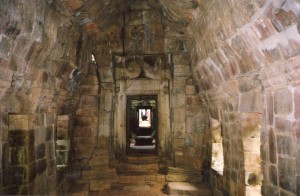
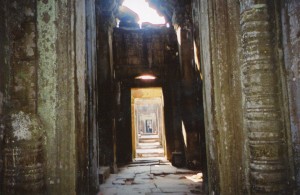
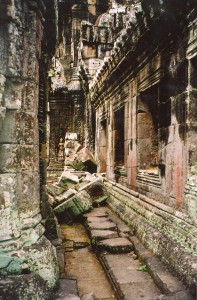
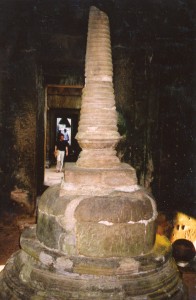
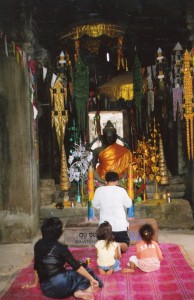
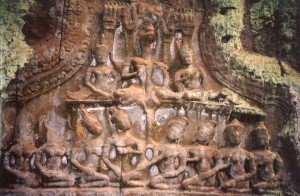
Comments on this entry are closed.